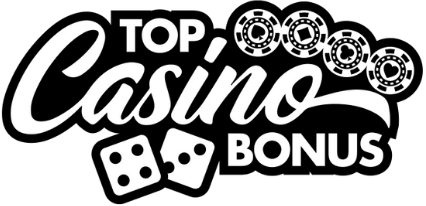Bluffing strategies in poker: when and how
Ask anyone who’s played poker at a serious table, and they’ll tell you the same thing: bluffing isn’t just a move, it’s an art. Done wrong, it’s like playing an out-of-tune saxophone in a jazz band. You don’t just need the guts to pull it off; you need the timing, the rhythm, and the read on your opponents. Over the decades, I’ve watched countless players flame out trying to make a hero bluff without understanding when or why it works. So let’s dismantle this idea right to the bolts.
Table of contents
Understanding the foundation of bluffing
The rookie mistake? Thinking bluffing is just about lying to win a pot. That’s like thinking soldering is just melting metal, it’s superficially true, but misses the entire craft. Bluffing is story-telling at the table. You’ve got to sell a believable narrative, one that fits the preflop, the flop, the turn, every step like chapters in a novel.
Types of bluffs that seasoned players use
First, recognize that not all bluffs are born equal. There’s the stone-cold bluff, where you’ve got nothing, and you’re purely attacking weak ranges. Then you’ve got semi-bluffs, my personal favorite, where you’ve got a draw or limited equity, like a flush or open-ender, but you’re applying pressure early.
Board texture’s key here. On a dry board like K-7-2 rainbow, a bluff’s going to feel forced unless you’ve been leading all hand. On a wet board like 9♠-T♠-J♥, now you’ve got room to bluff because there are too many combos in play for them to call light.
Picking your spots: when to bluff
Timing isn’t just important; it’s everything. Bluff into a calling station, and you’re burning chips. Bluff when a rock bets, you’re wasting breath. The trick is learning when your opponent’s range is capped, or when they’re showing weakness by checking back the turn or floating wide preflop.
Look for situational tells
Watch how players bet on earlier streets. Someone who raises preflop then checks two streets on a wet board? That’s someone who missed. Late-position continuation bets are one of the ripest spots for counter-bluffs, especially against players trying to represent ranges they never actually have.
Stack size also matters. Bluffing on a short stack is reckless unless you’ve got fold equity. You want at least a 1.5:1 ratio of chip investment to potential fold outcome. Never run big bluffs into short stackers, they’ll call just out of pricing instinct, not logic.
The psychology behind successful deception
If bluffing’s the weapon, psychology is the ammunition. I’ve sat across from kids who watched too many YouTube videos thinking three-bet bluffs are automatic. Here’s the catch, players don’t fold when they don’t believe you. You need to cultivate a table image that makes your bluff credible.
Cultivate a balanced range
Don’t wait for the river to decide what story you’re telling. Build your bluff on the flop with betting lines that match your value bets. If you always bet pot when you’ve got it and underbet when bluffing, you’re not unpredictable, you’re readable. Blend your value and bluff range until they’re indistinguishable.
The danger of over-bluffing
There’s an old saying: you bluff less than you think, and value bet more than you should. I’ve watched players implode after two successful bluffs, thinking they’re Phil Ivey, next thing they know, they’re chipless. Good bluffers bluff rarely, and they target the right people at the right time.
Use data to fine-tune decisions
These days, you don’t need to fly blind. Just like in sports betting, you can apply data analytics to understand probabilities, opponent tendencies, and when to execute a high EV bluff. It’s not cheating, it’s sharpening your weapon.
Leverage casino environments for bluff advantage
Different poker rooms play differently, and you’d better believe the crowd at Hard Rock plays with a different tempo than what you’ll find at the Harrah’s Casino. You’ve gotta adapt. Some rooms attract tight regulars, others draw loose cannons high on adrenaline.
Understand table meta before firing a bluff
Sit down quietly and watch. Who’s defending their blinds like a medieval fortress? Who avoids confrontation unless they’ve got the nuts? The best bluffers gather more reconnaissance than any military scout, then strike with surgical precision.
Online vs live bluffing: know the difference
Bluffing online at a site like Guts requires a different skill set. You don’t have live tells, but you’ve got patterns, timing tells, bet sizing anomalies, showdown history. I use tracking software religiously online; it’s not just helpful, it’s table stakes for serious players.
Live tells are gold, if you know how to read them
Palms sweating, nostrils flaring, chip fumbles, those are giveaway signals if you’ve spent enough hours under harsh table lights like those at Golden Nugget Casino. But they’ve got to be paired with context. Some players fake tells better than actors, don’t fall for a showboater’s trap.
Bluffing in tournament vs cash game settings
This is another landmine that trips up greenhorns. In tourneys, stack preservation is gold, especially near the bubble. You bluff less, and more carefully. In cash games, you leverage deeper stacks for larger positional bluffs and re-raises, which makes deception a bigger part of the arsenal.
ICM pressure changes everything
When a player is worried about laddering up, clever bluffing can manipulate them. However, never bluff someone who’s already cashed and now has nothing to lose. That breed of player can nuke your stack in a single irrational call. Balance your aggression with their motives.
A final proverb: the art lies in restraint
Anyone can push chips on a whim and pray their opponent folds, that’s not strategy, it’s desperation. The best bluffers are the ones who fold more than they bet, who know that a successful bluff is less about bravado and more about discipline. Know your story. Pick your enemy. Fire with purpose, not panic.
Poker doesn’t reward impatience. Like forging steel, your game is only as strong as the time you put into shaping it. And bluffing, that delicate, deadly stroke, is the edge that turns grinders into legends.





0 Comments